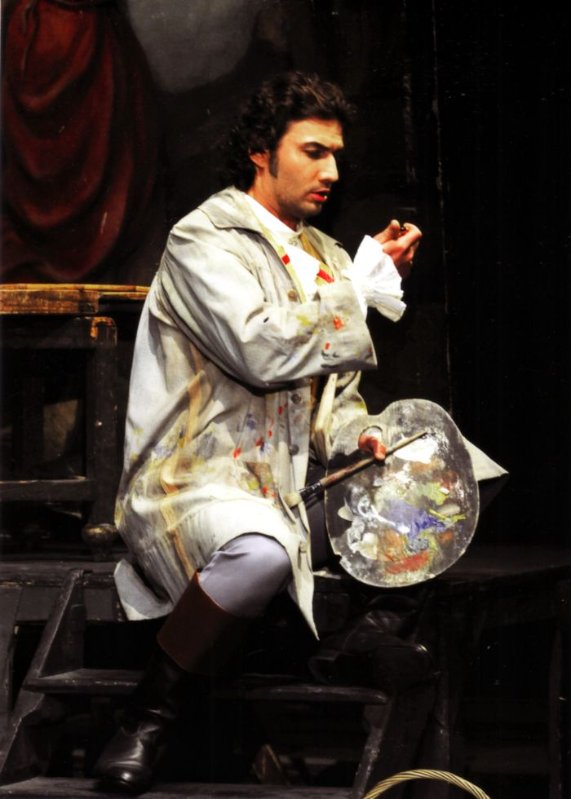|
|
|
|
|
|
|
|
| Opera News, August 2009 |
| LARRY L. LASH |
|
|
VIENNA --- Tosca, Wiener Staatsoper, 5/12/09
|
|
 Having
finally seen Wiener Staatsoper's still-in-use 1957 production of Tosca at
its 528th performance, I can better comprehend Ioan Holender's justification
for bringing it back every season, tossing in isolated performances with
casts quickly assembled for one or two performances: it is better for the
budget than having a dark night (seen May 12). Having
finally seen Wiener Staatsoper's still-in-use 1957 production of Tosca at
its 528th performance, I can better comprehend Ioan Holender's justification
for bringing it back every season, tossing in isolated performances with
casts quickly assembled for one or two performances: it is better for the
budget than having a dark night (seen May 12).
With a top ticket price of $263 (at the day-of-performance exchange rate),
it can be quite a crapshoot. Nicola Benois's sparse, ultra-traditional,
gloomy sets feature a dome of St. Peter's that looks like it was cut out of
the back of a Kellogg's Krispies box. Singers struggle to find available
light sources. Costumes are drab, except for Tosca's Empire diva gown ---
black and gold with a black cape edged in ermine.
Two Toscas squeezed between Ring cycles were the only scheduled appearances
this season or next of conductor Pier Giorgio Morandi, who was justifiably
and roundly booed. Tempos were so lax that the heated conversations between
Scarpia and his henchmen verged on spoken text with vague underscoring.
Except for one moment when a singer made an egregiously early entrance,
there was no communication between pit and stage, and the orchestra made
more noise than music.
This season, Maria Guleghina, José Cura and Samuel Ramey have appeared in
this Tosca, although never at the same time. The toss of the Puccinian I
Ching on this occasion brought a mostly felicitous mixture of old and new
voices.
At sixty-seven, Ruggiero Raimondi is celebrating his fortieth anniversary
with the company, but his once-virile, resonant baritone is now a vague
shadow. Occasionally he found good notes and solidly sustained them, on
pitch or not, but his voice was frequently swallowed by Morandi's unyielding
fortissimos. Raimondi remains a striking presence, and Scarpia is a role he
can still pull off, though a sympathetic conductor would have helped
substantially.
In a long-overdue Vienna debut, American soprano Catherine Naglestad
triumphed over Morandi by sticking to her guns, offering some ravishingly
beautiful singing as well as acing all of the role's treacherous, exposed
high notes. Naglestad's has always been a dark, reedy sound, and it is
rock-solid from top to bottom. One's hair stood on end at passages such as
the sustained, Brünnhilde-sized high C and jump down almost two octaves into
natural, unforced chest voice at "Non è ver.... Sogghigno di demone!" She
is a natural-born actress, and the chemistry with her Cavaradossi, Jonas
Kaufmann, was palpable.
Kaufmann's rise to international stardom has been phenomenal. "E lucevan le
stelle" stopped the show for several minutes, and camera-wielding fans
jammed the aisles at curtain calls. While he is a far more subtle singer
than Franco Corelli, Kaufmann did have two moments which brought back
memories of that illustrious predecessor: his perfect attack on and
sustaining of "Vittoria!" and, even more so, the way he capped "Recondita
armonia" with a diminuendo that continued into a sweet whisper of golden
tone until after the orchestra died away. In these moments, the cheesy
trappings simply didn't matter. |
| Foto: Tosca Wien (© Wiener Staatsoper/Axel
Zeininger) |
|
|
|
|
|
|
|
|
|
|
|
|
|
|
|
|
|